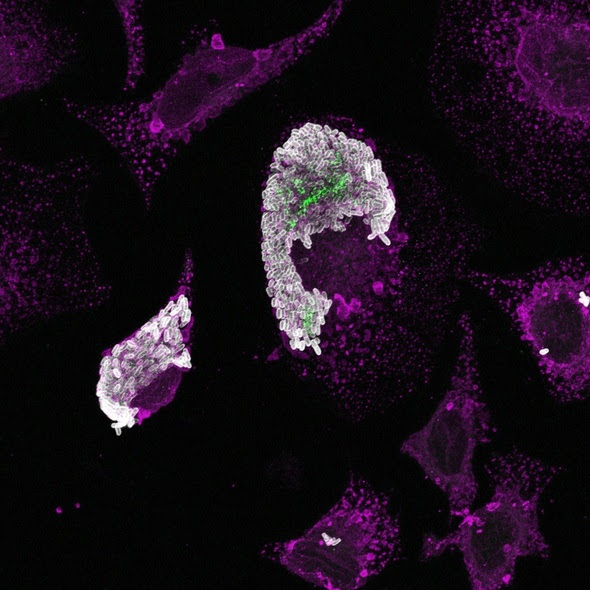
Monday, May 1, 2017
HeLa cell infected with Salmonella Typhimurium

NIAID Scientists Find Second Wave of Salmonella Syringe Activity in Intestinal Cells
NIAID scientists studying how Salmonella interacts with human cells have found a new way that this bacterial pathogen can postpone death of infected cells. Salmonella invade epithelial cells, such as those lining the intestine, by using a molecular syringe to inject bacterial proteins into the host cell. Now, they have identified an additional function for this syringe inside host cells by studying the activity of a bacterial protein, SopB. This protein targets Akt, a crucial controller of cell survival that is implicated in many different types of cancer. This discovery of a “second wave” of syringe activity inside host cells has important implications for how Salmonella causes disease. Additionally, because Salmonella is considered a potential platform for cancer therapeutics and vaccines, the findings could accelerate development in those areas.






















.png)











No hay comentarios:
Publicar un comentario